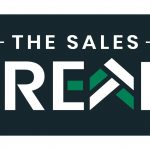Nearly half of businesses expect the economy to improve in the next 12 months, including 60% of middle market companies and 44% of small businesses—a four-year high
- Small Business: 12-month outlook jumps 14 points; key growth indicators rebound from 2024
- Middle Market: Strong optimism persists as 69% prioritize growth over cost-cutting
- Tariff Impact: 5 in 10 plan to stockpile inventory, absorb cost increases
- Generative AI: Adoption leading to increased staffing levels
- Cybersecurity: 3 in 10 feel very well prepared to prevent attacks
TACOMA, Wash., June 17, 2025 /PRNewswire/ — Umpqua Bank today released the findings of its seventh annual Business Barometer, a nationwide study into the mindset and priorities of small and middle market businesses. Despite a mixed outlook over the economic headwinds, including the potential impact of global tariffs, businesses across the U.S. report measured optimism about the direction of the economy and their 12-month prospects for growth compared to a year ago.
Umpqua Bank’s 2025 Business Barometer survey polled nearly 1,300 small businesses ($500K–$10M) and middle market companies ($10M–$500M) across the U.S. about their economic outlook, business prospects, investment opportunities and adaptions to a range of issues including AI, cybersecurity and tariffs.
While inflation persists as a top concern for 60%, and 51% expect negative impacts from tariffs, overall optimism about the current economy remains strong for middle market companies (62%) and is up slightly for small businesses (32%). The 12-month outlook also spiked to near or at four-year highs for both sectors. Nearly 5 in 10 of all businesses surveyed anticipate improved conditions, and a record number of middle market (66%) and small businesses (36%) will likely seek financing for growth in the year ahead.
“This year’s survey reminds us once again why small and middle market businesses are the backbone of our economy. Their grit and determination are sturdy enough to withstand current economic and global trade uncertainty,” said Umpqua Bank President Tory Nixon. “After optimizing their businesses through a pandemic and the ensuing challenges of the past few years, decision-makers remain clear-eyed about potential headwinds and clear-headed about what’s needed to move forward.”
2025 Business Barometer Highlights:
- Nearly half of all businesses expect the economy to improve in the next 12 months, including 60% of middle market companies and 44% of small businesses—a four-year high.
- Inflation (60%), recession (42%) and tariffs (41%), rank as the top three concerns.
- 5 in 10 expect revenue and demand for products and services to increase.
- 69% of middle market companies and 34% of small businesses are prioritizing growth over cost-cutting.
- Roughly half, including 72% of middle market companies and 41% of small businesses, are likely to stockpile inventory over the next 12 months in response to potential tariffs.
- 52% of middle market companies say reshoring manufacturing operations would take at least three or more years; 1 in 5 small businesses say it’s not feasible to do so.
- 85% of middle market and 50% of small businesses plan to invest in or adopt additional generative AI capabilities in the year ahead.
- 25% of middle market companies and 16% of small businesses were impacted by cybersecurity attacks in the past year.
Still Cautious, More Small Businesses Plan for Growth
Small businesses are more likely to cut costs this year than make investments (55% vs. 32%), and 82% plan to conserve cash. However, compared to a year ago, they are significantly less likely to prioritize managing financial concerns (27% vs 45% in 2024) and more likely to focus on growth opportunities (28% vs. 18% in 2024). Their improved mindset bears out across key growth indicators as they are more likely this year than last to finance expansion (+11 points), invest in digitization (+8) and financial safeguards (+7), add real estate (+7) and either merge (+9) or acquire (+4) another business.
Still Optimistic, Middle Market Balances Growth and Fiscal Management Priorities
Down slightly from last year, overall optimism remains near an all-time high for middle market companies, and most expect increases in product demand (65%), revenue (62%) and profitability (56%). Nearly 7 in 10 will prioritize investments over cost-cutting, though 82% also plan to conserve cash. More this year are also focused on managing financial challenges (+4 points) primarily due to increased concern over tariffs and other external factors.
Tariff Response: Measured Steps Not Drastic Changes
Businesses of all sizes believe any tariff impacts are more likely to be negative than positive, and 41% rank tariffs as a top three concern. In response, those with operations, sales or supply chains directly impacted have already taken measured steps to manage potential impacts: 54% have plans in place for managing price fluctuations, 50% have strengthened relationships with existing customers, 46% have looked for new domestic suppliers and 34% have moved up the timeline for planned sales. Moving forward, 53% are preparing to gradually increase prices, with 47% intending to absorb as much of the increased costs as possible. Nearly half, including 72% of middle market companies, are also likely to stockpile inventory in the near term.
While many enterprises with international operations are adjusting manufacturing or supply chains, more than 7 in 10 still plan to maintain or increase their current levels of foreign trade activity and exposure.
Generative AI Adoption Continues, Positively Impacts Employment Levels
For the second straight year, AI is the top investment priority for the middle market. More than 8 in 10 middle market and half of small businesses plan to invest in new generative AI tools over the next 12 months. Both segments feel confident in their pace of AI adoption compared to peers: Roughly 7 in 10 small businesses and nearly 9 in 10 middle market companies report keeping up with or surpassing competitors. Only 5% of all businesses surveyed say adoption is leading to decreased staffing levels. By contrast, 57% of middle market and 22% of small businesses say adopting AI actually is leading to increased staffing levels.
Businesses Move to Prevent Cybersecurity Attacks; 3 in 10 “Very Well Prepared”
In the last 12 months, most businesses have prioritized cybersecurity and anti-fraud enhancements, a trend most pronounced among middle market companies. Safeguards for all businesses surveyed include employee trainings (67%), using bank fraud prevention solutions (61%), tightening internal controls (60%) and conducting regular audits to identify vulnerabilities (53%). While 82% feel at least moderately well prepared to prevent an attack, just 3 in 10 feel very well prepared.
Survey Methodology
The Umpqua Bank 2025 Business Barometer, conducted annually, surveyed 1,290 owners, executives and financial decision-makers from U.S. small and middle market companies. The online survey was conducted in partnership with DHM Research, a public policy and business research firm, and targeted leaders at companies with $500,000 to $500 million in annual revenue. The survey, which did not filter for Umpqua Bank customers, has a 2.7% margin of error and was fielded from April 21 to May 2, 2025.
About Umpqua Bank
Umpqua Bank, a subsidiary of Columbia Banking System, Inc. (Nasdaq: COLB), is an award-winning regional financial institution supporting businesses of all sizes and consumers across eight western states. With more than $50 billion in assets, Umpqua is the largest Northwest-based and third largest publicly traded bank on the West Coast. Through a network of nearly 300 branches and a full suite of commercial and retail capabilities, Umpqua is taking its celebrated brand of relationship banking across the West into some of the most dynamic and economically vibrant markets in the country. For its commitment to exceptional customer service and thriving communities, Umpqua has been named one of “Oregon’s Most Admired Companies” for 20 straight years.
SOURCE Umpqua Bank










